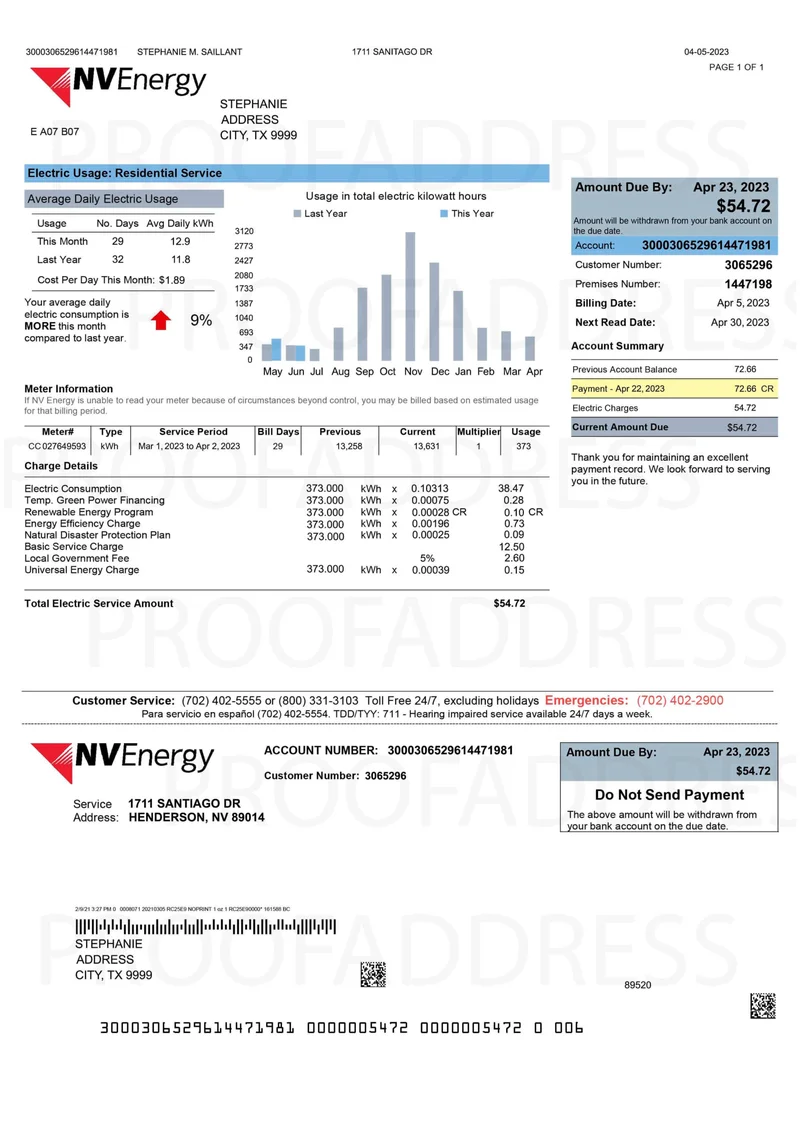A tense, almost sterile silence hung in the air of the hearing room on October 23rd, broken only by the shuffling of papers and the low hum of fluorescent lights. On one side, representatives from NV Energy. On the other, Las Vegas Valley residents, their faces a mixture of confusion and frustration. The topic at hand was a fundamental change to how nearly every person in Southern Nevada will pay for electricity, a shift from a simple consumption model to something far more complex: a "demand charge."
This isn't just a minor rate hike. It's a complete re-engineering of the financial relationship between the utility and its customers. Starting next April, NV Energy will begin billing every residential customer based not just on how much power they use, but on the precise time of day they use the most. The utility will identify each household's single highest 15-minute period of electricity usage every day. That peak usage, measured in kilowatts, will then be multiplied by a new demand rate.
The company's public-facing narrative is one of modernization and fairness. But when you dissect the underlying mechanics, the proposal looks less like a simple update and more like a surgically precise financial instrument designed to shift risk and penalize a very specific pattern of behavior.
The 15-Minute Trap
For decades, the math of your power bill has been straightforward: you use a certain number of kilowatt-hours, you multiply it by a rate, and you pay the total. It's a volumetric business. The new model introduces a second, more abstract variable. Think of it this way: your old bill was like paying for gasoline by the gallon. The new bill is like paying by the gallon, but also adding a hefty surcharge based on the single fastest you accelerated your car that month, even if it was just for a few seconds to merge onto the freeway.
This "demand charge" is calculated from a fleeting moment—a quarter of an hour. What constitutes a residential power spike? It’s not running a single lightbulb. It’s the simultaneous operation of major appliances: the air conditioner kicking on while the oven is preheating and the clothes dryer is running. It's the mundane, chaotic, and often unavoidable overlap of a modern household's energy consumption.
NV Energy's claim is that this new structure better reflects the costs of maintaining the grid, which must be built to handle peak demand, not average demand. That’s technically true. But I've looked at hundreds of these kinds of corporate filings and rate cases, and this particular application at a residential level is unusual. It effectively outsources the incredibly complex and expensive job of load balancing from the utility directly onto the shoulders of individual families. It asks the average person to think like a grid operator, constantly monitoring and staggering their appliance usage to avoid a costly 15-minute spike. Is that a realistic expectation? And more importantly, is it the real goal?

The utility's media relations manager, Meghin Delaney, acknowledged the public's skepticism, stating, "I totally understand the folks who feel like they can’t trust NV Energy right now." This statement is telling, especially given the company was recently found to have overcharged more than 60,000 customers—an error it is now in the process of rectifying. Trust, it seems, is a commodity in short supply, and this new, opaque billing system isn't likely to replenish it.
The Solar Paradox
The company’s justification for this upheaval hinges on a single, specific group: the 10% of its customers who have installed rooftop solar. The explicit argument is that these customers are not paying their "fair share" for grid maintenance. The new demand charge, according to NV Energy, will correct this imbalance, resulting in an average bill increase of about $12 for solar customers while potentially offering a slight decrease for everyone else.
But my analysis suggests this "fairness" argument is a carefully constructed narrative that obscures the true mechanical impact of the policy. As solar user Michael Cook pointed out during the consumer session, the new metric "ignores total generation and exports" (Las Vegas Valley residents voice concerns about new NV Energy billing component - FOX5 Vegas). This is the critical, glaring flaw in the utility's logic. A solar household might be a net-zero energy user over the course of a month, pushing as much clean power back to the grid as it consumes. But the demand charge doesn't care about the net total. It only cares about the peak.
Consider the typical solar home's usage pattern. It generates a surplus of power during the sunny afternoon (a period of low household consumption) and sends it to the grid. Then, in the evening, when the sun goes down, the family comes home, turns on the lights, cooks dinner, and runs appliances. Their consumption from the grid spikes for a few hours, creating the very 15-minute peak the demand charge is designed to penalize. They are being punished not for being bad grid citizens, but for having a lifestyle that doesn't perfectly align with the sun's schedule.
The company's projected $12 average increase is a fascinating number. How was this "average" calculated? Does it account for the vast differences in home size, solar system efficiency, and family behavior? We don't have that data. This lack of transparency raises a fundamental question about the methodology. Is the utility penalizing solar users for a structural problem of its own making? It appears so. The demand charge isn't a fair tool for cost allocation; it's a blunt instrument to claw back revenue from the very customers who are actively reducing their reliance on the utility's core product.
This Isn't About Fairness; It's About Control
Let's be clear. The introduction of a residential demand charge is not a simple billing update. It is a strategic move to reassert control over a changing energy landscape. Rooftop solar represents a fundamental threat to the centralized utility model, and this policy is a sophisticated, data-driven defense. By penalizing the inherent unpredictability of residential peak usage—a pattern especially pronounced in solar homes—NV Energy disincentivizes the very concept of distributed, independent power generation. The goal isn't to make solar users pay their "fair share"; it's to make rooftop solar economically non-viable. It is a brilliant, if deeply cynical, piece of financial engineering designed to protect a legacy business model from the disruptive threat of a decentralized future.









